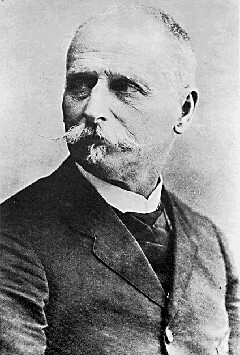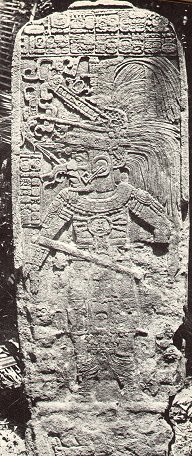Teoberto Maler facts for kids
Teoberto Maler (born Teobert Maler, 12 January 1842 – 22 November 1917) was an explorer who spent his life studying and recording the ancient ruins of the Maya civilization. He was a pioneer in using photography to document these important historical sites.
Contents
Early Life and Adventures
Teobert Maler was born in Rome, Italy. His parents were German. His father worked as a diplomat for the Duchy of Baden. Maler studied architecture and engineering in Karlsruhe, Germany. When he was 21, he moved to Vienna, Austria. There, he worked for a famous architect named Heinrich von Ferstel and became an Austrian citizen.
Maler wanted to see more of the world. He traveled to Mexico as a soldier with Emperor Maximilian. He quickly rose through the ranks, from Cadet to Captain. After the war, Maler decided to stay in Mexico instead of returning to Europe. He later became a Mexican citizen. He also changed his first name to "Teoberto," which was easier to say in Spanish.
Discovering Ancient Maya Sites
Maler became very interested in photography and the ancient buildings of Mesoamerica. In 1876, he took detailed photos of the structures at Mitla. The next year, he moved to San Cristóbal de las Casas. In July, he began a trip to visit the ruins of Palenque.
Even though some people had written about Palenque before, not many had visited it. Maler had to hire local people to clear a path to the ruins using machetes. He spent a week at Palenque, drawing, measuring, and photographing the site. He realized that earlier descriptions were not complete. He saw that most visitors had only described a small part of the buildings there.
While Maler was at Palenque, he met Gustave Bernoulli. Bernoulli was a Swiss botanist who also loved Maya sites. He had recently visited Tikal. Bernoulli agreed with Maler that much more work was needed to record the ruins in the area.
Returning to Mexico and His Work
In 1878, Maler had to go back to Europe. He needed to sort out his father's will, which had many legal problems. While lawyers worked on it, Maler lived in Paris. He gave talks about Mexican ancient sites and read everything he could find about Mesoamerica.
In 1884, his father's will was settled, and Maler inherited some money. He then returned to Mexico. He wanted to spend all his time studying the Maya.
He settled in Yucatán and bought a small house in Ticul. There, he set up a photography studio. He also learned the Maya language. However, he spent most of his time in the forests. He was usually with a few Maya helpers who cleared the jungle from the ruins and carried his heavy camera gear.
He started by visiting well-known sites like Chichen Itza and Uxmal. But he also followed every clue he found. This led him to be the first person to document many new ruins. At Chichen Itza, he lived among the ruins for three months. He recorded the site in much more detail than anyone before him.
Over the next few years, Maler also explored many distant sites in the Petén region of Guatemala. He also explored sites along the Usumacinta River.
Maler did not like how people in the 1800s often removed interesting sculptures from ancient sites. They would send these pieces to cities in Europe or North America. Maler saw how this damaged the sites. He strongly believed that the ruins should be kept whole and untouched. He wrote many letters to the Mexican government, asking them to protect the sites. Today, people think Maler's ideas were very advanced for his time.
Publishing His Findings
Maler knew it was important to share his discoveries with others. In 1898, the Peabody Institute at Harvard University agreed to publish his reports. This led to a series of important books.
However, working with the Peabody Institute was not always easy. Maler wanted the books to include very tiny details and many more pictures than the editors wanted. Also, it was hard to reach Maler. He would often leave for new expeditions in the forests and could not be contacted for months. The Peabody Institute ended their agreement with Maler in 1909. But they continued to publish his materials until 1912. His books are still very important for people who study the Maya.
Maler stopped his difficult jungle expeditions in 1905. He moved to his home in Mérida, Yucatán.
In 1910, Maler traveled to Europe. He hoped to find people who would pay to publish more of his reports. But he was not successful. He only managed to sell some of his photographs to the National Library in Paris.
In his later years, Teoberto Maler lived a quiet life. He had lost some money due to bad investments and a financial crisis in Yucatán in 1907. He earned a small living by selling copies of his photos to tourists and young archaeologists. He also gave talks about Maya art and buildings at the Mérida school of fine arts. Maler passed away in Mérida at the age of 75.
Many of his writings were published after he died. Some came out in the 1930s, and more in the 1970s and 1990s.
Images for kids
-
Chichen Itza, Yucatán, México. El Castillo, 1892.
See also
 In Spanish: Teoberto Maler para niños
In Spanish: Teoberto Maler para niños




